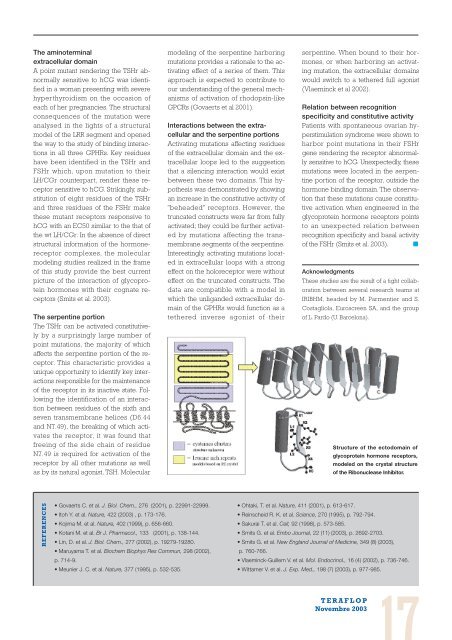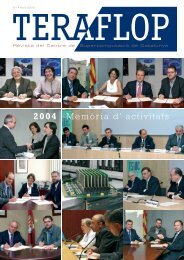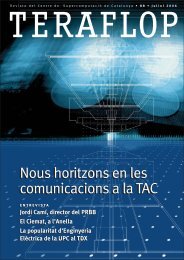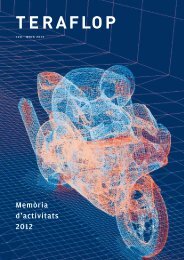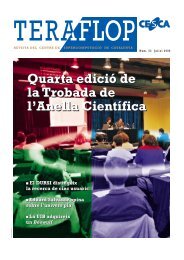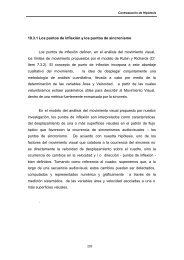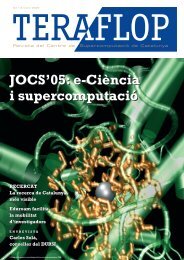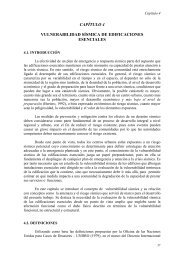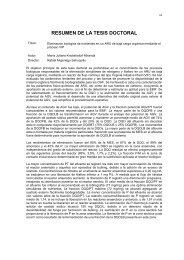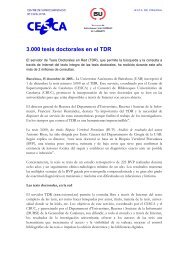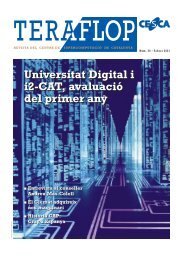Teraflop 73 - Novembre - cesca
Teraflop 73 - Novembre - cesca
Teraflop 73 - Novembre - cesca
Create successful ePaper yourself
Turn your PDF publications into a flip-book with our unique Google optimized e-Paper software.
The aminoterminal<br />
extracellular domain<br />
A point mutant rendering the TSHr abnormally<br />
sensitive to hCG was identified<br />
in a woman presenting with severe<br />
hyperthyroidism on the occasion of<br />
each of her pregnancies. The structural<br />
consequences of the mutation were<br />
analysed in the lights of a structural<br />
model of the LRR segment and opened<br />
the way to the study of binding interactions<br />
in all three GPHRs. Key residues<br />
have been identified in the TSHr and<br />
FSHr which, upon mutation to their<br />
LH/CGr counterpart, render these receptor<br />
sensitive to hCG. Strikingly, substitution<br />
of eight residues of the TSHr<br />
and three residues of the FSHr make<br />
these mutant receptors responsive to<br />
hCG with an EC50 similar to the that of<br />
the wt LH/CGr. In the absence of direct<br />
structural information of the hormonereceptor<br />
complexes, the molecular<br />
modeling studies realized in the frame<br />
of this study provide the best current<br />
picture of the interaction of glycoprotein<br />
hormones with their cognate receptors<br />
(Smits et al. 2003).<br />
The serpentine portion<br />
The TSHr can be activated constitutively<br />
by a surprisingly large number of<br />
point mutations, the majority of which<br />
affects the serpentine portion of the receptor.<br />
This characteristic provides a<br />
unique opportunity to identify key interactions<br />
responsible for the maintenance<br />
of the receptor in its inactive state. Following<br />
the identification of an interaction<br />
between residues of the sixth and<br />
seven transmembrane helices (D6.44<br />
and N7.49), the breaking of which activates<br />
the receptor, it was found that<br />
freeing of the side chain of residue<br />
N7.49 is required for activation of the<br />
receptor by all other mutations as well<br />
as by its natural agonist, TSH. Molecular<br />
REFERENCES<br />
• Govaerts C. et al. J. Biol. Chem., 276 (2001), p. 22991-22999.<br />
• Itoh Y. et al. Nature, 422 (2003) , p. 1<strong>73</strong>-176.<br />
• Kojima M. et al. Nature, 402 (1999), p. 656-660.<br />
• Kotani M. et al. Br J. Pharmacol., 133 (2001), p. 138-144.<br />
• Lin, D. et al. J. Biol. Chem., 277 (2002), p. 19279-19280.<br />
• Maruyama T. et al. Biochem Biophys Res Commun, 298 (2002),<br />
p. 714-9.<br />
• Meunier J. C. et al. Nature, 377 (1995), p. 532-535.<br />
modeling of the serpentine harboring<br />
mutations provides a rationale to the activating<br />
effect of a series of them. This<br />
approach is expected to contribute to<br />
our understanding of the general mechanisms<br />
of activation of rhodopsin-like<br />
GPCRs (Govaerts et al 2001).<br />
Interactions between the extracellular<br />
and the serpentine portions<br />
Activating mutations affecting residues<br />
of the extracellular domain and the extracellular<br />
loops led to the suggestion<br />
that a silencing interaction would exist<br />
between these two domains. This hypothesis<br />
was demonstrated by showing<br />
an increase in the constitutive activity of<br />
"beheaded" receptors. However, the<br />
truncated constructs were far from fully<br />
activated; they could be further activated<br />
by mutations affecting the transmembrane<br />
segments of the serpentine.<br />
Interestingly, activating mutations located<br />
in extracellular loops with a strong<br />
effect on the holoreceptor were without<br />
effect on the truncated constructs. The<br />
data are compatible with a model in<br />
which the unliganded extracellular domain<br />
of the GPHRs would function as a<br />
tethered inverse agonist of their<br />
serpentine. When bound to their hormones,<br />
or when harboring an activating<br />
mutation, the extracellular domains<br />
would switch to a tethered full agonist<br />
(Vlaeminck et al 2002).<br />
Relation between recognition<br />
specificity and constitutive activity<br />
Patients with spontaneous ovarian hyperstimulation<br />
syndrome were shown to<br />
harbor point mutations in their FSHr<br />
gene rendering the receptor abnormally<br />
sensitive to hCG. Unexpectedly, these<br />
mutations were located in the serpentine<br />
portion of the receptor, outside the<br />
hormone binding domain. The observation<br />
that these mutations cause constitutive<br />
activation when engineered in the<br />
glycoprotein hormone receptors points<br />
to an unexpected relation between<br />
recognition specificity and basal activity<br />
of the FSHr (Smits et al. 2003). ■<br />
Acknowledgments<br />
These studies are the result of a tight collaboration<br />
between several research teams at<br />
IRIBHM, headed by M. Parmentier and S.<br />
Costagliola, Euroscreen SA, and the group<br />
of L. Pardo (U. Barcelona).<br />
Structure of the ectodomain of<br />
glycoprotein hormone receptors,<br />
modeled on the crystal structure<br />
of the Ribonuclease Inhibitor.<br />
• Ohtaki, T. et al. Nature, 411 (2001), p. 613-617.<br />
• Reinscheid R. K. et al. Science, 270 (1995), p. 792-794.<br />
• Sakurai T. et al. Cell, 92 (1998), p. 5<strong>73</strong>-585.<br />
• Smits G. et al. Embo Journal, 22 (11) (2003), p. 2692-2703.<br />
• Smits G. et al. New England Journal of Medicine, 349 (8) (2003),<br />
p. 760-766.<br />
• Vlaeminck-Guillem V. et al. Mol. Endocrinol., 16 (4) (2002), p. <strong>73</strong>6-746.<br />
• Wittamer V. et al. J. Exp. Med., 198 (7) (2003), p. 977-985.<br />
TERAFLOP<br />
<strong>Novembre</strong> 2003


